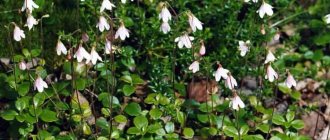Iris (iris): unique properties of the plant
It is recommended to buy orris root at the pharmacy for the prevention and treatment of the following diseases:
- for pancreatitis and gastritis;
- for diseases of the liver and gall bladder;
- for inflammatory and chronic lung diseases, bronchitis;
- for tuberculosis;
- for colds and sore throats;
- for gynecological diseases;
- for benign and malignant formations;
- for ulcers, wounds, burns, fistulas;
- with dropsy;
- for neuroses and epilepsy.
Most of us, admiring the beauty of iris flowers, do not think about how useful this amazing medicinal plant is. Because of its appearance, the iris received another name - cockerel.
Flowers of killer whale, chistyaka, pikulnik, “bear cucumbers”, “magpie flowers” (these are also names for iris!) decorate the flowerbeds of caring gardeners, are found in the wild, and are planted in pots.
Nature did not offend the beauty of the iris
Published: 08/06/2018 18:02
Leafless iris
Irises are flowers familiar to everyone, mainly from their garden forms, the number of which amounts to tens of thousands.
The second recognized Russian name for these flowers is iris. By the way, all species of the iris genus belong to the iris family. Man has developed a huge number of varieties of irises, but there are also natural types of these flowers, which, unfortunately, are becoming very rare. On the territory of Tatarstan there are only three such species, two of them - the Siberian iris and the leafless iris - are listed in the Red Book of the Republic of Tatarstan, and the latter is also in the Red Book of the Russian Federation.
In order to continue to enjoy these rainbow flowers, according to experts, it is necessary to preserve their wild relatives, which can genetically support populations of cultivated varieties
"Iris" means "rainbow" in Greek. There is a legend that when Prometheus stole fire from the gods and gave it to people, a rainbow broke out on earth, which glowed all night, and with the rising of the sun it went out, and in its place flowers appeared, shimmering with all the colors of the rainbow. Indeed, the iris is not a monochromatic flower. On it you can observe a range of shades of blue, violet, lilac or yellow - from deeply saturated to soft light or white. In Rus', the plant received the name “kasatik” because of its rosette leaves, reminiscent of a girl’s braid. According to another version, this name is associated with the shape of the plant’s leaf, which has a sharp edge, like a scythe for haymaking.
Siberian iris is not a very tall herbaceous perennial plant with single stems up to 90 centimeters. It grows in floodplain meadows and loves light very much. Blooms in June. Blue-violet flowers, on the petals of which purple veins are clearly visible, reach a diameter of four to seven centimeters. The Siberian iris is not only beautiful, but also has medicinal properties, for which the rhizomes of the plant are mainly used. It is used in distillery production and cooking. About 15 localities of this species are known in Tatarstan.
Siberian iris
Its brother, the leafless iris, is more squat, up to half a meter tall. Its flowers are also blue-violet, but unlike the Siberian iris, they are “bearded” - on the outer circle of the petals there is a longitudinal strip of hairs that guide pollinating insects into the flower. Two populations of leafless iris are known in the republic - near the Drozhzhanov villages of Tatarskie Shatrashany and Novoe Chekurskoe. The bearded iris is very beautiful, so it is often dug up to plant in one’s dacha or garden, which greatly harms natural populations. However, the reverse process also occurs when cultivated plants “escap” into nature. Examples of such relocation are the finds of leafless iris in the Laishevsky and Almetyevsky regions.
Irises are not difficult plants to grow and do not require any special care. In order to continue to enjoy these rainbow flowers, according to experts, it is necessary to preserve their wild relatives, which can genetically support populations of cultivated varieties.
The material was prepared based on the book “Rare species of flora of the Republic of Tatarstan”.
Photo: vk.com [uptolike]
Author of the article: AKIFYEVA Veronica Issue: No. 113 (28495) Issue: No. 113 (28495)
Add “Republic of Tatarstan” to your favorite sources on Yandex.News Subscribe to the “Republic of Tatarstan” channel in Yandex.Zen
Add a comment
Click to cancel reply.
You may also be interested in
27.02.2021Today is Special Operations Forces DayMilitary Commissioner of Tatarstan Sergei Pogodin congratulated the Special Operations Forces servicemen and officers on the holiday... 4190 |
26.02.2021Voting will be automatedThe Central Election Commission of Tatarstan intends to test the updated state automated system “Elections”... 5200 |
26.02.2021Go dog sledding, walk on stiltsThe festival of Slavic culture “Broad Maslenitsa” will take place on the territory of the Kremlin embankment in Kazan on March 13…. 5350 |
26.02.2021The best metro station interiors are selectedMore than ten teams from all over the country submitted applications to participate in the competition for the best concept for the interiors of stations on the second line of the Kazan metro.... 4680 |
26.02.2021But who wants a jacket that’s almost new?We asked our readers: do you easily part with old things?... 4840 |
Use of iris today and its properties
Over many years of using and studying iris, people's knowledge about this amazing plant has expanded. According to reviews of people who use the plant as medicine, in most cases, iris contributed to a rapid recovery and improvement of the condition of patients. The root and herb of iris are used as a medicinal plant:
- Strengthens the immune system;
- Fighting pathogenic bacteria;
- Antioxidant;
- Stops bleeding;
- Facilitating the course of childbirth;
- Expels parasites;
- Reducing temperature;
- Removes toxins from the body;
- Promoting the removal of sputum;
- Relieving pain;
- Actively protects the liver and is a choleretic agent;
- Removes excess fluid from the body and relieves swelling;
- Stops bleeding;
- Relieving inflammation;
- Toning and strengthening;
- Fighting fungal diseases;
- Having an astringent effect;
- Reduces tumors and stops their growth.
Indications for use
Iris has been used for medicinal purposes since ancient times. Avicenna described iris in his book as a remedy that can stop rotting and heal pain. He also pointed out the antitumor, wound-healing and a number of other properties of this plant.
The range of uses of iris is quite wide; it is included in preparations for the treatment of viral and infectious diseases, acute respiratory infections, tonsillitis, bronchitis, tuberculosis, heart disease, diabetes, ascites, epilepsy and neuroses.
Herbalists add iris root to mixtures intended to resolve tumors. The oil is used in the treatment of cancerous ulcers. The root of the plant is one of the ingredients of the official antitumor collection of M. N. Zdrenko, used for papillomatosis of the bladder, breast tumors and other malignant neoplasms.
Article on the topic: White sweet clover - beneficial properties, description
The root contains bitterness and essential oil, which makes it possible to use it for liver diseases, stomach colic, cholelithiasis, gastric ulcers, pancreatitis, gastroenteritis, anacid gastritis and other diseases of the digestive system.
According to the results of research by scientists of the Pharmaceutical Academy, the entire plant (both its underground and above-ground parts) improves kidney function and is a good protector for them, therefore, as part of herbal preparations, iris is used to treat diseases of the urinary system.
For hemorrhoids, sitz baths with the addition of fresh infusion of rhizomes are effective. Roots infused with sunflower oil are used to rub the skin for myositis and arthritis. Powdered iris seeds are used as a powder for external bleeding caused by soft tissue injuries.
Iris is recommended for various gynecological diseases, including menorrhagia, dysmenorrhea, uterine bleeding and leucorrhoea.
An aqueous decoction is prepared from the rhizomes to rinse the mouth for toothache and gingivitis. It also helps get rid of dandruff. It is used for mastopathy, fistulas, ulcers (including trophic), infected and purulent wounds, burns, scurvy, scrofula, scab and freckles. An alcohol solution is effective for heel spurs.
In aromatherapy, iris is used as a sedative - essential oil is used to restore after heavy moral and mental stress, to achieve spiritual harmony.
Ways to use iris roots for certain diseases:
For edema, dropsy
A tablespoon of plant roots (buy at a herbal pharmacy) is brewed in boiling water (1 cup). After keeping the brewed raw material in a glass for 30 minutes, take it 2 times a day. Already on the second day of treatment, swelling begins to disappear.
For gastritis, pancreatitis
Orris root contains essential oil and bitterness. Thanks to these properties, iris helps with stomach colic, liver diseases, cholelithiasis, pancreatitis, and gastritis. To improve the condition, take the tincture 4 times a day before meals (? a glass per dose). The course is no more than 2-4 weeks with a 2-3 week break.
For women, for gynecological diseases
For gynecological diseases, drink a decoction made from iris (20 g of raw material + 200 g of water). Dose: 2 tablespoons 5-6 times a day. The decoction is also used for douching. This recipe helps with leucorrhoea and inflammation of the ovaries.
For coughs, colds, sore throats, bronchitis
The expectorant and antioxidant properties of iris are used in the treatment of the upper respiratory tract. A teaspoon of orris powder (root) is poured into one and a half glasses of hot water and boiled for about seven minutes. The decoction is infused and filtered, subsequently taking 100 ml for coughing attacks. The healing infusion is continued until recovery.
For epilepsy, neuroses
It is recommended to buy iris root at the pharmacy for nervous disorders and increased excitability. To prepare the decoction, take two tablespoons of the raw material, add hot water (1 glass) and boil (5-6 minutes). Add water to increase the volume to 0.5 liters. Let the broth brew for 1-2 hours. Strain. Take regularly, 1/3 glass 3-4-5 times a day. This decoction also prevents the development of frequent attacks of epilepsy.
For skin infections, ulcers, wounds, fistulas, burns
Tampons and napkins soaked in healing iris infusion are left on wounds and infected areas for half an hour. Apply 1-2 times a day until the wound is completely healed.
Infusion for gargling and mouthwash, for stomatitis
Brew two tablespoons of root powder with a large cup of boiling water (300 ml) and place in a thermos, tightly closing it with a lid. Regularly gargle the throat and mouth with the strained solution until recovery.
For the liver and gallbladder
Pour 1 teaspoon of orris root (iris) into 400 ml of boiling water, strain after 2 hours. Take half a glass before meals (4 times a day).
For oncology
For oncological diseases, a teaspoon of the roots of the plant is brewed with 0.5 liters of water and boiled for five minutes. After waiting 2 hours, the infusion is carefully filtered. Reception: half a glass 20-30 minutes before meals. Combine with medications recommended by your doctor.
Field iris: a flower and rules for its preparation
Traditional healers attribute many beneficial properties to iris. The plant copes well with cough, sore throat, bronchitis, stomach colic, edema, migraine, and diseases of the gastrointestinal tract. Iris can affect the improvement of tuberculosis.
To achieve spiritual harmony, experts advise using iris essential oil, as it restores the psyche.
In folk medicine you can find many recipes for medicines, the preparation of which is based on the rhizome of iris. Roots are usually harvested in autumn or early spring. Decoctions, teas, infusions, creams, powders, and powders are prepared from the roots and flowers of iris.
How to properly prepare a plant:
- Dig up the root and rinse it with water.
- Trim off the parts of the root that were located above the ground.
- Rinse the root again.
- Cut the thick roots into several pieces.
- Dry the raw materials under a canopy.
The plant is stored for three years, after which it cannot be used. Medicines from iris help to get rid of cough and abdominal pain. The use of the plant is contraindicated for people with high levels of blood clotting.
Where can I buy?
You can buy orris root in our online store “Russian Roots”. Courier delivery is available in Moscow and the region; goods will be sent to the regions by mail. In Moscow, health products can also be purchased in our network of herbal pharmacies. Prices for products in the online store and in herbal pharmacies are the same. We will be glad to receive your feedback on the purchased products!
Attention! All materials published on our website are protected by copyright. When re-publishing, attribution and a link to the original source are required.










